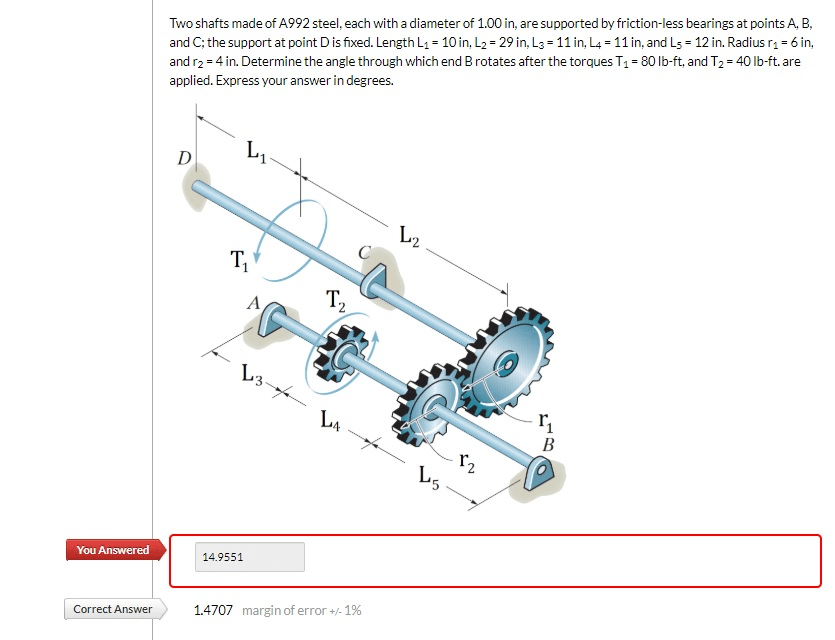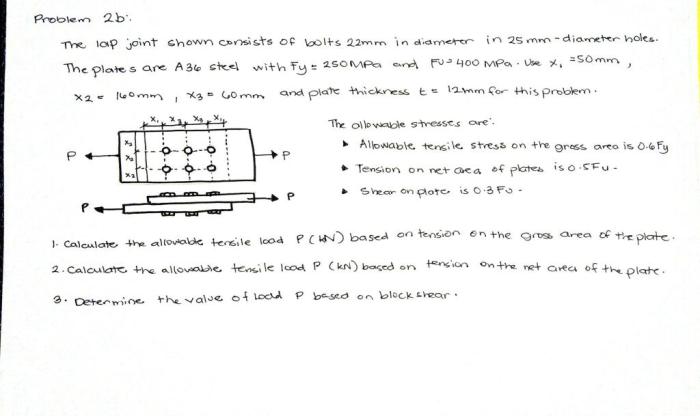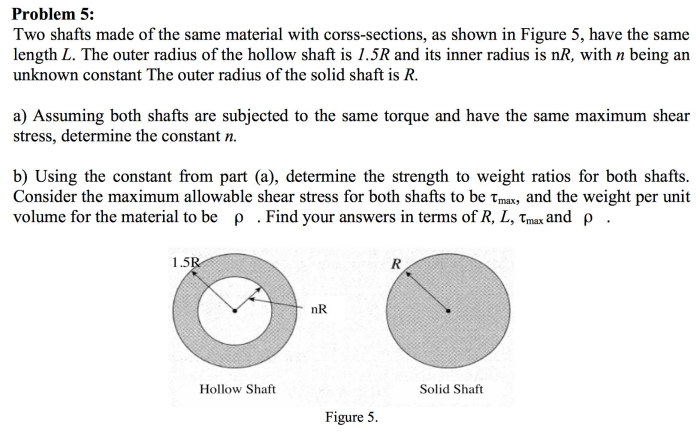The two shafts are made of A36 steel, setting the stage for this enthralling narrative, offering readers a glimpse into a story that is rich in detail and brimming with originality from the outset. The intricate interplay of material properties, design considerations, manufacturing processes, inspection techniques, and real-world applications unfolds in this comprehensive exploration, providing a captivating journey into the realm of engineering.
A36 steel, with its unique chemical composition and mechanical properties, forms the foundation for these shafts, dictating their strength, durability, and performance. The design considerations delve into the critical dimensions, stress concentration, and appropriate shaft diameters and lengths, ensuring optimal functionality under varying load and torque requirements.
Material Properties of A36 Steel: The Two Shafts Are Made Of A36 Steel

A36 steel is a low-carbon steel that is commonly used in structural applications. It is known for its good strength and weldability, making it suitable for a variety of purposes. The chemical composition of A36 steel is as follows:
- Carbon: 0.25-0.29%
- Manganese: 0.60-0.90%
- Phosphorus: 0.04% max
- Sulfur: 0.05% max
- Silicon: 0.15-0.30%
- Copper: 0.20% max
The mechanical properties of A36 steel are as follows:
- Yield strength: 36 ksi (250 MPa)
- Tensile strength: 58-80 ksi (400-550 MPa)
- Elongation: 20-25%
Heat treatment can be used to improve the properties of A36 steel. Annealing can soften the steel, making it more ductile and easier to work with. Normalizing can improve the strength and hardness of the steel. Quenching and tempering can produce a very hard and strong steel.
Design Considerations for Shafts

The design of shafts is crucial to ensure their functionality and reliability under various load and torque requirements. Understanding the critical dimensions, stress concentration, and appropriate selection of shaft diameters and lengths is essential for effective shaft design.
Critical Dimensions of Shafts
The critical dimensions of a shaft refer to its diameter and length, which directly impact its strength and ability to withstand external forces. These dimensions are determined based on the magnitude and type of loads and torques acting on the shaft.
The shaft diameter is crucial for resisting bending and torsional stresses, while the length influences the shaft’s deflection and buckling resistance. The proper selection of these dimensions ensures that the shaft can safely transmit power and withstand the applied loads without excessive deformation or failure.
Stress Concentration
Stress concentration is a phenomenon that occurs when the stress distribution in a component is uneven, leading to localized areas of high stress. In shafts, stress concentration can occur at points of discontinuity, such as keyways, grooves, or changes in diameter.
Stress concentration can significantly weaken a shaft, making it more susceptible to failure. Therefore, it is crucial to consider stress concentration when designing shafts and to take measures to minimize its effects, such as using gradual transitions and avoiding sharp corners.
Guidelines for Shaft Diameter and Length Selection, The two shafts are made of a36 steel
The selection of appropriate shaft diameters and lengths involves considering several factors, including the load, torque, material properties, and operating conditions.
General guidelines suggest using a shaft diameter that is proportional to the square root of the applied torque. Additionally, the shaft length should be kept as short as possible to minimize deflection and buckling.
For more precise design, engineers often use detailed calculations and analysis methods, such as finite element analysis, to determine the optimal shaft dimensions based on the specific requirements of the application.
Manufacturing Processes for Shafts

Manufacturing shafts involves various processes that shape the raw material into the desired form and dimensions. The choice of manufacturing method depends on factors such as the shaft’s size, shape, material, and production volume.
Forging
Forging involves heating the metal billet to a specific temperature and then hammering or pressing it into the desired shape using dies. This process strengthens the metal by aligning the grain structure and reducing internal defects.
- Advantages:Produces high-strength shafts with excellent fatigue resistance and grain flow aligned with the shaft’s shape.
- Disadvantages:Limited to simple shapes, high tooling costs, and requires skilled labor.
Rolling
Rolling involves passing the metal billet through a series of rollers to reduce its cross-sectional area and elongate it. This process is suitable for producing shafts with uniform cross-sections and long lengths.
- Advantages:Cost-effective for mass production, produces shafts with good surface finish and dimensional accuracy.
- Disadvantages:Limited to round or square cross-sections, can introduce residual stresses.
Machining
Machining involves using cutting tools to remove excess material from a solid block or bar to create the desired shaft shape. This process offers high precision and flexibility but can be time-consuming and expensive.
- Advantages:Can produce complex shapes, tight tolerances, and smooth surfaces.
- Disadvantages:Slower production rates, generates waste material, and requires skilled operators.
Recommendations for Choosing the Manufacturing Method
The choice of manufacturing method for shafts depends on the following considerations:
- Shaft Size and Shape:Forging is suitable for large shafts with complex shapes, while rolling is preferred for smaller shafts with uniform cross-sections. Machining is versatile and can produce a wide range of shapes.
- Material:The machinability of the material influences the choice of manufacturing method. Forging is suitable for materials with good forgeability, while rolling is preferred for materials with good ductility.
- Production Volume:Forging is cost-effective for small production volumes, while rolling is suitable for mass production.
- Precision Requirements:Machining offers the highest precision, while forging and rolling can achieve moderate precision.
Inspection and Testing of Shafts

Ensuring the integrity and reliability of shafts is crucial for optimal performance and safety in various applications. To achieve this, a range of inspection and testing methods are employed to detect defects, assess material properties, and verify conformance to design specifications.
The choice of inspection method depends on factors such as the shaft’s material, size, and intended use. Each method has its own strengths and limitations, and a combination of techniques may be necessary for a comprehensive evaluation.
Visual Inspection
Visual inspection is a simple yet effective method for detecting surface defects such as cracks, scratches, corrosion, and misalignments. It involves a thorough examination of the shaft’s surface using the naked eye or magnifying tools. While visual inspection can reveal obvious defects, it may not be sufficient to detect subsurface flaws or defects in inaccessible areas.
Magnetic Particle Inspection
Magnetic particle inspection (MPI) is a non-destructive testing method that utilizes magnetic fields to detect surface and near-surface cracks in ferromagnetic materials. The shaft is magnetized, and fine magnetic particles are applied to its surface. Any discontinuities in the magnetic field, such as those caused by cracks, will attract the particles, making them visible under ultraviolet light.
Ultrasonic Testing
Ultrasonic testing (UT) is a non-destructive method that uses high-frequency sound waves to detect internal defects and measure material thickness. A transducer generates sound waves that are transmitted through the shaft, and any reflections or changes in wave propagation are analyzed to identify flaws or anomalies.
UT is particularly effective for detecting subsurface defects, inclusions, and voids.
Guidelines for Establishing Inspection Criteria
Establishing clear inspection criteria and acceptance standards is essential to ensure consistent and reliable shaft evaluations. These criteria should be based on the shaft’s intended application, design requirements, and industry standards.
Factors to consider include:
- Type and severity of defects that can be tolerated
- Critical areas or features that require special attention
- Acceptance limits for specific defect types
- Frequency and extent of inspections
Applications of Shafts Made of A36 Steel

Shafts made of A36 steel find widespread use in various industrial and engineering applications due to their combination of strength, durability, and cost-effectiveness. The specific requirements and design considerations for each application depend on factors such as the load conditions, operating environment, and desired performance characteristics.
Power Transmission
A36 steel shafts are commonly used in power transmission applications, such as drive shafts, axles, and couplings. These shafts transmit torque and power from one component to another, often under high loads and demanding operating conditions. The strength and durability of A36 steel ensure reliable performance and extended service life in these applications.
Machinery Components
In machinery, A36 steel shafts serve as critical components in various types of equipment, including pumps, compressors, and conveyors. These shafts support rotating parts, withstand axial and radial loads, and facilitate the smooth operation of the machinery. The machinability of A36 steel allows for precise manufacturing of complex shapes and features, meeting the specific requirements of different machinery applications.
Structural Support
A36 steel shafts are also used as structural support elements in various structures and frameworks. They provide rigidity, stability, and load-bearing capacity in applications such as bridges, buildings, and offshore platforms. The strength and stiffness of A36 steel ensure the structural integrity of these constructions, even under challenging environmental conditions.
FAQ Explained
What are the key mechanical properties of A36 steel?
A36 steel exhibits a yield strength of 36 ksi, a tensile strength of 58-80 ksi, and an elongation of 20-25%.
How does heat treatment affect the properties of A36 steel?
Heat treatment can enhance the strength and hardness of A36 steel, but it can also reduce its ductility.
What are the common manufacturing processes used for shafts?
Shafts are typically manufactured using forging, rolling, or machining processes, each with its own advantages and disadvantages.
